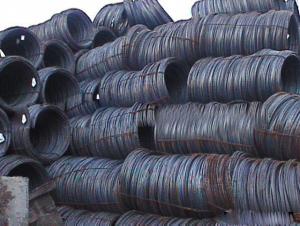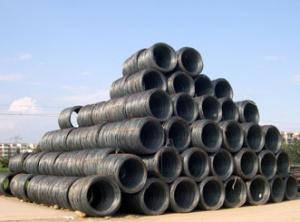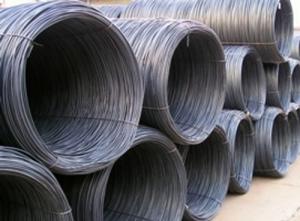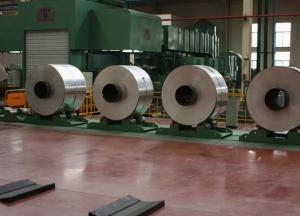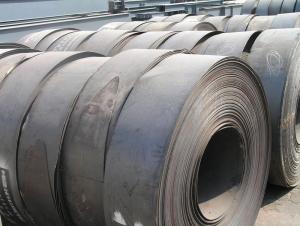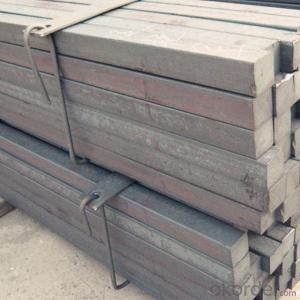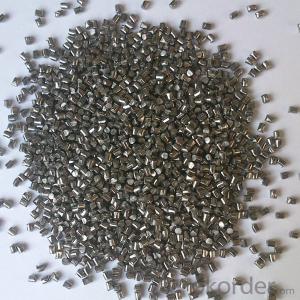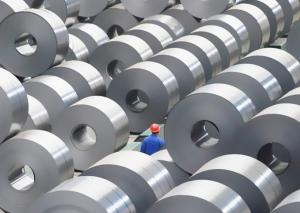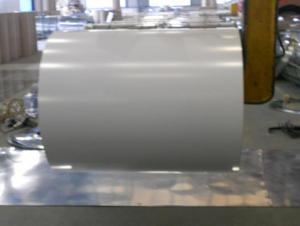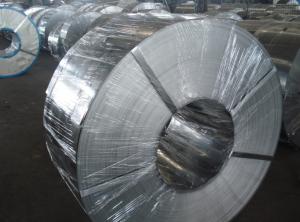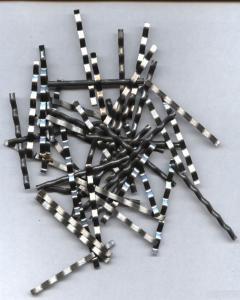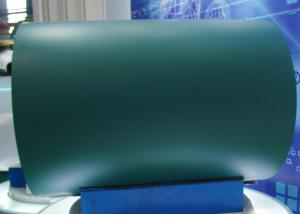Wire Rod 5.5
- Loading Port:
- China Main Port
- Payment Terms:
- TT OR LC
- Min Order Qty:
- -
- Supply Capability:
- -
OKorder Service Pledge
OKorder Financial Service
You Might Also Like
Product Description:
Specifications of Hot Rolled Wire Rod:
Steel Grade: Q195/235, SAE1006-1018B Standard: ASTM, GB
Diameter: 5.5mm, 6.5mm, 7mm,8mm,9mm,10mm,12mm,14mm
Type: in coil, coil weight around 2MT Alloy or Not: Alloy
Technique: Hot Rolled Place of Origin: China Mainland
Surface: round, no twisted, light and smooth Brand Name: HSKY
Chemical Composition: (Please kindly find our chemistry of our material based on Q195、Q235A and Q235B as below for your information)
| Trademark | Rank | Chemical composition (quality score) % | ||||
| C | Si | Mn | S | P | ||
| ≤ | ≤ | ≤ | ||||
| Q195 | 0.06-0.12 | 0.30 | 0.25 | 0.050 | 0.045 | |
| Q235 | A | 0.14-0.22 | 0.30 | 0.30-0.65 | 0.050 | 0.045 |
| Q235 | B | 0.12-0.20 | 0.30 | 0.30-0.70 | 0.045 | 0.045 |
Usage and Applications of Hot Rolled Wire Rod:
After hot-rolled the products shaped into coil and delivery as finished product, including round, square, rectangular, hexagonal and so on. Since most of the products are round, it is generally called wire rod. Carbon steel wire rod is widely used in construction and manufacturing. Carbon steel wire rod is mainly used for reinforcement of reinforced concrete and welded structure or reprocessed (roberts , nail, etc.) materials, especially used to produce wire drawing, welding electrode, nails, spring, electronic, precise machinery parts and so on.
Packaging & Delivery of Hot Rolled Wire Rod:
Packaging Detail: products are packed in coil, each coil weight around 2 MT, and then shipped by container or bulk vessel
Delivery Detail: within 45 days after received deposit or LC.
Label: to be specified by customer, generally, each bundle has 1-2 labels
Trade terms: FOB, CFR, CIF
- Q:What are the different types of steel products used in the manufacturing of luxury goods?
- The different types of steel products used in the manufacturing of luxury goods include stainless steel, Damascus steel, and carbon steel. Stainless steel is a popular choice due to its corrosion resistance and durability. Damascus steel is known for its unique pattern and high strength, making it a favored material for luxury knives and jewelry. Carbon steel is valued for its hardness and edge retention, commonly used in high-end chef knives and timepieces.
- Q:What are the different types of steel wire products?
- There are several different types of steel wire products, including steel wire ropes, steel wire mesh, steel wire cables, steel wire springs, and steel wire fencing.
- Q:How do steel products contribute to the construction of sports facilities and stadiums?
- Steel products play a crucial role in the construction of sports facilities and stadiums due to their strength, durability, and versatility. From structural elements like beams, columns, and trusses to roofing systems, seating arrangements, and even the playing surfaces, steel is extensively used in almost every aspect of these projects. Its high tensile strength allows for the creation of large open spaces, ensuring the stability and safety of the structures. Additionally, steel's resistance to corrosion and fire makes it ideal for withstanding the harsh environmental conditions and ensuring the longevity of the facilities. Moreover, steel's flexibility enables architects to design unique and innovative structures, offering spectators an enhanced viewing experience. Overall, steel products are indispensable in constructing sports facilities and stadiums, providing the necessary strength, durability, and aesthetic appeal that contribute to their successful completion.
- Q:How are steel products used in the construction of airports and terminals?
- Steel products are used extensively in the construction of airports and terminals due to their durability, strength, and versatility. Steel is used for structural components such as columns, beams, and trusses, providing a strong framework for the airport or terminal building. Steel is also used for roofing and cladding, ensuring weatherproof and long-lasting exteriors. Additionally, steel is utilized in the construction of bridges, walkways, and canopies, providing a safe and functional infrastructure for passengers and staff. Overall, steel products play a crucial role in the construction of airports and terminals by providing reliable and efficient solutions for various architectural and structural requirements.
- Q:What are the different types of steel staircases and handrails?
- There are several types of steel staircases and handrails available, including straight staircases, spiral staircases, and floating staircases. Handrails can be simple and straight, or they can feature decorative elements such as scrolls or twists. Additionally, there are options for different finishes and materials, such as brushed steel or powder-coated finishes.
- Q:How is steel plate rolled for improved thickness accuracy?
- Steel plate is rolled for improved thickness accuracy through a process called cold rolling. In this method, the steel plate is passed through a series of rollers that gradually reduce its thickness, ensuring a uniform and precise thickness across the entire plate. Additionally, the use of advanced control systems and measurement techniques during the rolling process helps to further enhance the accuracy of the thickness.
- Q:How are steel forgings used in heavy machinery and equipment?
- Steel forgings are used in heavy machinery and equipment primarily for their superior strength, durability, and reliability. These forgings, made by shaping and compressing the steel under extreme heat and pressure, provide the necessary structural integrity to handle high loads and withstand harsh operating conditions. They are commonly used in components such as gears, shafts, crankshafts, and connecting rods, ensuring optimal performance and longevity of heavy machinery and equipment.
- Q:How are steel forgings different from castings?
- Steel forgings and castings are two different manufacturing processes used to produce metal components. The main difference lies in the way each process shapes and forms the metal. Forgings involve the application of pressure or force to shape heated metal, resulting in a stronger and more durable product. On the other hand, castings involve pouring molten metal into a mold and allowing it to solidify, resulting in a less dense and more porous product. In summary, forgings offer superior strength and structural integrity, while castings provide more intricate and complex shapes.
- Q:What are the applications of steel grating in industrial platforms?
- Steel grating is extensively used in industrial platforms due to its numerous applications. It provides a sturdy and durable flooring solution, offering high strength and load-bearing capacity. Steel grating enhances safety in industrial environments by providing slip resistance and allowing for efficient drainage of liquids and debris. Additionally, it offers ventilation and visibility, making it suitable for platforms in industries such as manufacturing, oil and gas, mining, and transportation. Steel grating is also easily customizable, allowing for various designs to meet specific industrial requirements.
- Q:What are the properties of stainless steel for medical equipment?
- Stainless steel used in medical equipment possesses several important properties. Firstly, it is highly resistant to corrosion, which is crucial in medical settings where cleanliness and sterility are paramount. Additionally, stainless steel is durable and can withstand frequent cleaning and sterilization processes without losing its structural integrity. It is also non-magnetic, making it safe for use in magnetic resonance imaging (MRI) machines. Furthermore, stainless steel is biocompatible, meaning it is not toxic or harmful to the human body, making it suitable for implants and surgical instruments. Overall, the properties of stainless steel make it an ideal material for medical equipment due to its corrosion resistance, durability, non-magnetic nature, and biocompatibility.
1. Manufacturer Overview |
|
|---|---|
| Location | |
| Year Established | |
| Annual Output Value | |
| Main Markets | |
| Company Certifications | |
2. Manufacturer Certificates |
|
|---|---|
| a) Certification Name | |
| Range | |
| Reference | |
| Validity Period | |
3. Manufacturer Capability |
|
|---|---|
| a)Trade Capacity | |
| Nearest Port | |
| Export Percentage | |
| No.of Employees in Trade Department | |
| Language Spoken: | |
| b)Factory Information | |
| Factory Size: | |
| No. of Production Lines | |
| Contract Manufacturing | |
| Product Price Range | |
Send your message to us
Wire Rod 5.5
- Loading Port:
- China Main Port
- Payment Terms:
- TT OR LC
- Min Order Qty:
- -
- Supply Capability:
- -
OKorder Service Pledge
OKorder Financial Service
Similar products
New products
Hot products
Related keywords
